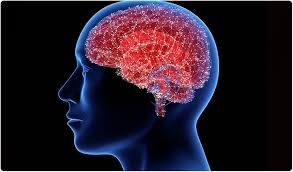Parkinson’s Disease
Colgan Osteopathy in Kettering, Northamptonshire.
Osteopathy can help to relieve symptoms in patients with Parkinson’s disease.

Parkinson’s disease (PD) is defined as a progressive disorder of the nervous system that affects the patient’s mobility, balance and cognition. Tremor, slowed movements, and rigidity are physical symptoms which contribute to postural and gait abnormalities seen in many PD patients. Other symptoms include loss of balance and restricted range of motion, increasing the risk of falling. Osteopathic manipulative medicine (OMM) is a form of manual treatment provided by osteopathic physicians. This form of treatment aims to help decrease muscle spasms and improve joint range of motion and movement.
There have been studies investigating the effect of Osteopathic treatments on PD patients. One previous research study demonstrated that a single session of osteopathic manipulative improved , particularly stride length, cadence, and maximum velocities of upper and lower extremities.8 Other studies on non-PD subjects have shown that Osteopathic treatment can improve subject balance. In a recent study 20 elderly subjects with Osteopathic treatment applied weekly for four weeks showed an improvement in postural instability. Osteopathic manipulations has also been shown to improve subjects with dizziness.

Osteopathic treatment could be utilized in improving gait in PD patients addressed muscle hypertonicity and joint motion restrictions by using muscle energy and articulatory techniques for the spine and the extremities. Some specific Osteopathic techniques could be used to address balance focused on removing muscle spasms and restrictions of the spine and cranium.
Based on our experience of treating PD patients in our clinical practice and the improvement of symptoms in the forementioned studies we developed a specific protocol to help our patients. The protocol starts with a CV4 technique, which helps to address cranial restrictions, and can potentially affect patient’s autonomic function. The protocol then proceeds to address each major spinal region and the extremities by decreasing muscle hypertonicity and increasing joint range of motion with direct Osteopathic articulatory and muscle energy techniques. These techniques are selected due to their document efficacy in improving joint mobility in the general population as well as in PD both in clinical practice and documented prior studies.
Other Articles
- Chronic Pain
- Fibromyalgia overview
- Fibromyalgia
- Why women should do weights
- Overactive Bladder treatments with Electrotherapy
- Stroke rehabilitation
Colgan Osteopath in Kettering Northamptonshire
Call us to see how we can help 07738493974 or book online
